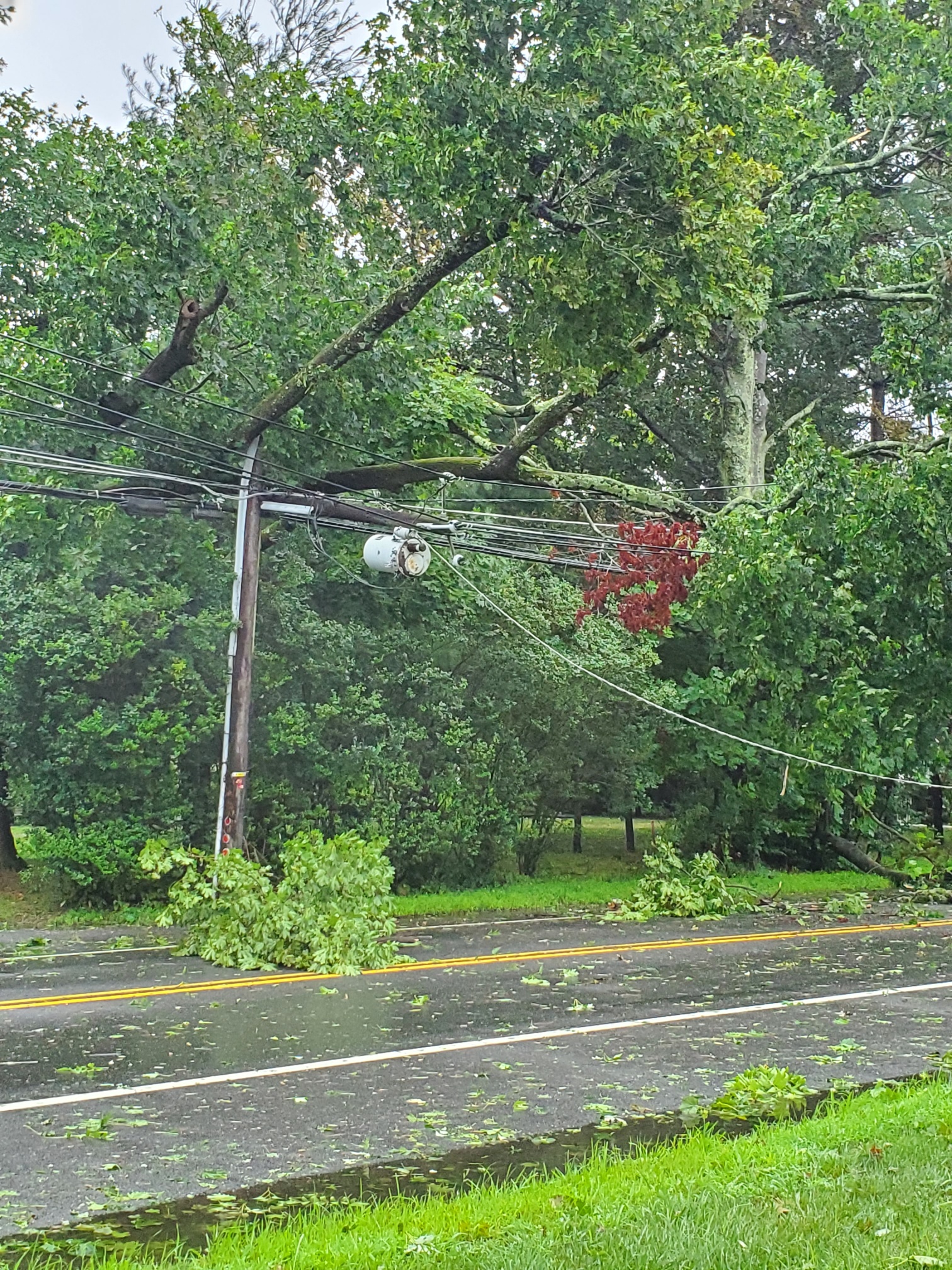Crews have been working throughout the night the restore power and clear roads of fallen trees throughout South Brunswick.
Overnight, PSE&G was able to restore power and get Route 1 reopened, according to information provided by the South Brunswick Police Department around 8:30 a.m. Aug. 5.
There are an estimated 2,000 homes still without power. The South Brunswick Office of Emergency Management will open the Senior Citizen Center from 10 a.m. to 4 p.m. for residents to charge items or who are in need of air conditioning.
Several roads remain closed and traffic lights at other intersections are not operating:
CLOSED ROADS
- Route 27 – between Kingston Terrace and Promenade Boulevard
- Freshponds Road – between Route 130 and Davidson Mill Road
- Dunhams Corner Road – between Church Lane and Cranbury –South River Road
- Friendship Road – between New Road and Broadway Road
- Stevens Road
- Miller Road
- Old Road
- Taylor Road at Jefferson Court
Traffic Lights Out
- Route 130 / Route 522
- Route 130 / Deans Rhode Hall Road
- Route 27 / Raymond Road
- Route 535 / Thatcher Road
- Georges Road / Ridge Road / Culver Road
- Deans Rhode Hall Road / Fresh Ponds Road
Hazard Alert: Overnight, South Brunswick fire departments responded to a number of homes with high carbon monoxide levels because of generators being used improperly, according to the statement. One woman in her 60s is hospitalized from her exposure. Be aware of where you are using your generators and do not use them indoors.
The the South Brunswick Fire Department chiefs reminded residents about the safe use of generators.
Safely Use Your Generator:
Prevent Carbon Monoxide (CO) Poisoning:
- Never use a generator inside a home, garage, basement, crawlspace or any partially enclosed area
- Keep these devices outdoors, away from doors, windows and vents that could allow carbon monoxide to come indoors.
- Opening doors and windows or using fans will not prevent CO buildup in the home. Although CO can’t be seen or smelled, it can rapidly lead to full incapacitation and death. Even if you cannot smell exhaust fumes, you may still be exposed to CO. If you start to feel sick, dizzy, or weak while using a generator, get to fresh air RIGHT AWAY – DO NOT DELAY.
- Install CO alarms in central locations on every level of your home and outside sleeping areas to provide early warning of accumulating carbon monoxide
- Test the batteries frequently and replace when needed.
- If the carbon monoxide alarm sounds, move quickly to a fresh air location outdoors or by an open window or door
Avoid Electrocution and Fire:
- To avoid electrocution, keep the generator dry and do not use in rain or wet conditions. Operate it on a dry surface.
- Be sure to turn the generator off and let it cool down before refueling. Gasoline spilled on hot engine parts could ignite.
- Plug appliances directly into the generator, or use a heavy duty, outdoor-rated extension cord that is rated (in watts or amps) at least equal to the sum of the connected appliance loads.
- Check that the entire cord is free of cuts or tears and that the plug has all three prongs, especially a grounding pin.
- Never try to power the house wiring by plugging the generator into a wall outlet. Known as “backfeeding,” this practice puts utility workers, your neighbors and your household at risk of electrocution.
- Remember, even a properly connected portable generator can become overloaded, resulting in overheating or generator failure. Be sure to read the instructions.
- If necessary, stagger the operating times for various equipment to prevent overloads.

